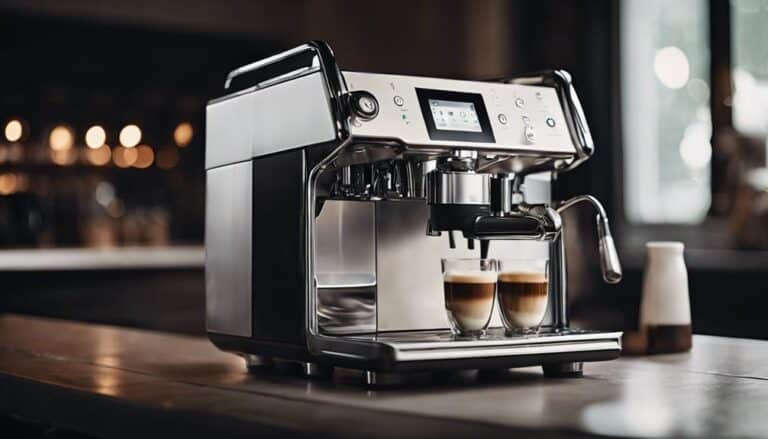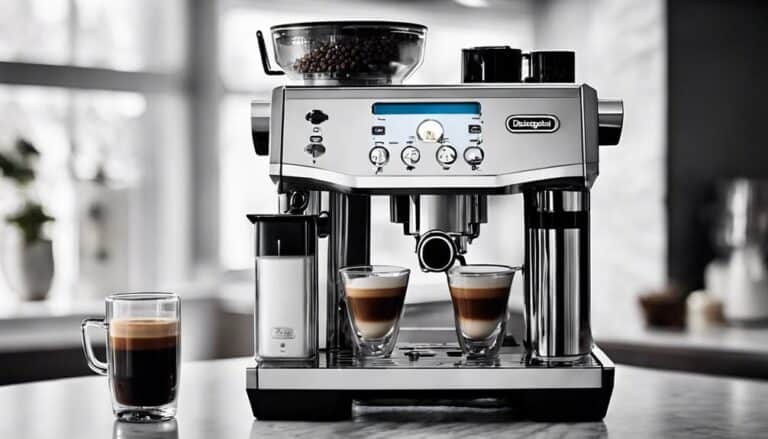Oatly Barista Vs Regular: 10 Key Differences
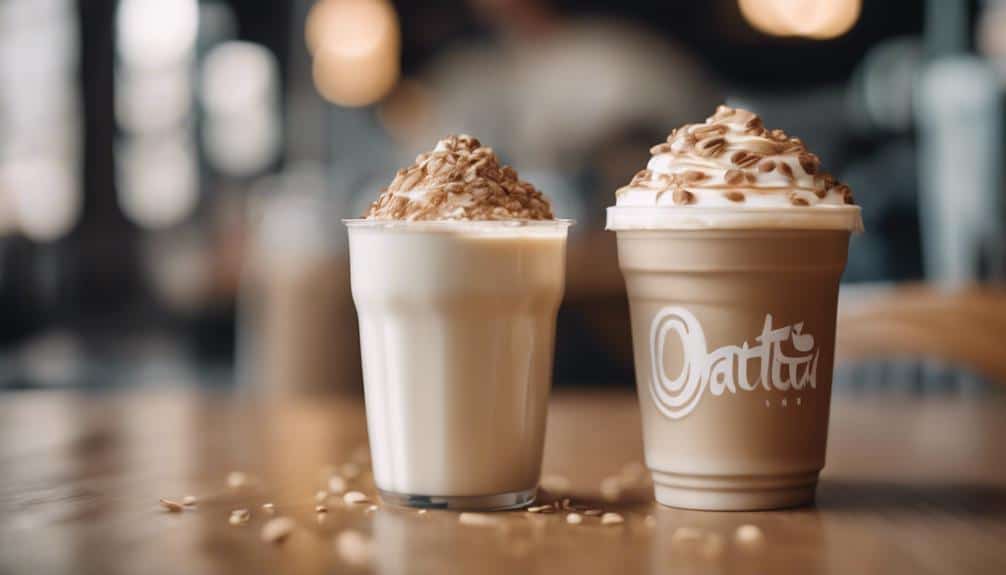
As I sipped my morning latte made with oat milk, a thought crossed my mind – what sets Oatly Barista apart from the Regular version? The subtle nuances in taste, texture, and frothing capabilities between the two seem to hold a wealth of information waiting to be uncovered. Exploring these 10 key differences might just shed light on which oat milk blend could elevate my coffee experience to new heights.
Taste Profile
When comparing Oatly Barista and Regular oat milk, the taste profile plays a significant role in determining which blend aligns best with one's sensory preferences.
The Regular oat milk presents a raw, oaty taste, offering a more organic and slightly watery experience.
On the other hand, the Barista blend steps up the game with a little bit of resemblance to cow's milk, making it a favorite in cafes and bakeries.
The creamier and thicker texture of the Barista blend is a result of its higher 3% fat content compared to the 2% fat content in the Regular blend. This difference in fat content contributes to the distinct taste profiles of the two blends.
Ultimately, personal preference plays an important role in deciding between the two, as some may prefer the raw and oaty notes of the Regular blend, while others may lean towards the creamy and cow's milk-like flavor of the Barista blend.
Texture Variations
When comparing Oatly Barista and Regular blends, the texture variations are important aspects to take into account.
The Barista blend is known for its creamier and thicker consistency, ideal for creating frothy coffee drinks.
In contrast, the Regular blend offers a more organic, watery texture that may suit those looking for a lighter option.
Creamy Vs. Smooth
In comparing the creamy texture of Oatly's Barista blend to the smooth consistency of the regular blend, one can immediately discern distinct differences that cater to varied preferences among consumers. The creamy richness of the Barista blend provides a luxurious mouthfeel, enhancing the overall experience of drinks like lattes and cappuccinos.
On the other hand, the regular blend offers a smooth finish that's lighter and less dense, appealing to those who prefer a more fluid texture. The creaminess of the Barista blend not only impacts the texture but also influences the flavor profile, adding a subtle richness to beverages.
Understanding these textural disparities is essential in selecting the most suitable Oatly product based on individual preferences.
Frothy or Thin
For texture variations in Oatly oat milk, the distinction lies between frothy and thin consistencies, catering to diverse preferences and specific culinary uses. The barista blend is known for its ability to produce a velvety foam when steamed, making it perfect for creating a frothy latte or a creamy cappuccino.
On the other hand, the regular blend offers a thinner texture, making it more suitable for blending into a smoothie or pouring over cereal. While the barista blend excels in maintaining a rich and creamy consistency in espresso-based drinks, the regular blend provides a lighter and smoother texture for various beverages.
Ultimately, the choice between frothy and thin textures depends on individual taste preferences and the desired application in different recipes.
Frothing Capability

I've found that when comparing the frothing capability of Oatly Barista and Regular blends, the foam quality notably differs. The Barista blend tends to create a creamier and thicker foam, making it a preferred choice for intricate latte art.
Additionally, the Barista blend excels in froth retention, maintaining its texture longer compared to the Regular blend.
Foam Quality Comparison
When comparing the foam quality of Oatly Barista blend to the Regular blend, one can immediately notice a notable difference in thickness and creaminess. The Barista blend produces a denser and richer foam, making it ideal for creating intricate latte art designs due to its exceptional foam stability.
The Regular blend, on the other hand, offers a lighter and less creamy foam, more suitable for straightforward coffee beverages. The steaming techniques comparison between the two reveals that the Barista blend requires a bit more expertise to achieve the perfect texture, but once mastered, it elevates the latte art potential significantly.
Foam quality, influenced by frothing techniques and equipment, plays an important role in the overall coffee experience, especially for those seeking a professional touch in their brews.
Froth Retention Difference
In evaluating the froth retention difference between Oatly's Barista and Regular blends, it becomes evident that the Barista blend outperforms the Regular blend in its ability to maintain dense and long-lasting foam for espresso-based drinks.
The Barista blend's superior froth stability, density, and endurance make it a preferred choice for creating creamy and velvety textures in coffee beverages. This specially formulated blend is known for its excellent frothing capabilities, ensuring that the foam holds up well over time, enhancing the overall coffee experience.
When considering froth retention as a key factor, the Barista blend emerges as a standout option for those looking to elevate their coffee preparations with a consistent and high-quality frothing performance.
Sweetness Level
The distinction in sweetness levels between Oatly Barista and Oatly Regular is notable, with each offering a unique sensory experience. Oatly Barista tends to have a slightly higher sweetness level compared to Oatly Regular, attributed to its creamier texture.
This difference in sweetness leads to distinct taste profiles: Oatly Regular boasts a more natural, organic sweetness, while Oatly Barista presents a smoother, almost dessert-like sweetness. For individuals with a flavor preference leaning towards a sweeter taste, Oatly Barista is often the favored choice, catering to those with a sweet tooth.
On the other hand, Oatly Regular appeals to consumers who enjoy a more subtle sweetness in their beverages. The sweetness in Oatly Barista not only enhances the overall flavor but also makes it a popular option for specialty coffee drinks like lattes.
Both variations strike a balance with their sweetness levels, complementing their unique blends and textures effectively.
Nutritional Variances
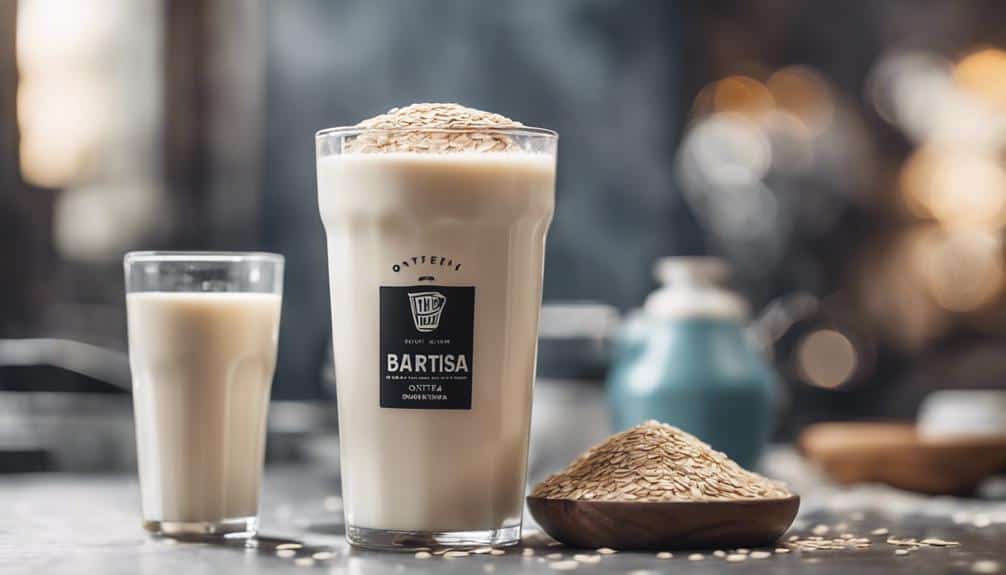
The calorie variance and protein content difference between Oatly's Barista and Regular blends play an essential role in understanding their nutritional variances.
The slight increase in fat content in the Barista blend contributes to its creamier texture and richer flavor.
These nutritional disparities cater to diverse preferences and usage scenarios, making each blend suitable for different consumption needs.
Calorie Variance
Comparing the calorie content between Oatly Barista and Regular blends reveals significant differences in nutritional value. Here is a breakdown:
- Calories: Oatly Barista contains 60 calories per 8 oz serving, while the Regular blend has 90 calories.
- Fat Content: Barista blend has 3 grams of fat, whereas the Regular blend contains 2 grams.
- Protein Amount: The Barista blend offers 2 grams of protein, whereas the Regular blend has 1 gram.
These distinctions in calorie count, fat, and protein content can impact flavor preferences, health implications, and ingredient differences between the two oat milk varieties. Understanding these variances allows for informed choices based on individual dietary needs and preferences.
Protein Content Difference
When comparing the protein content variance between Oatly Barista and Regular oat milk blends, one can discern a subtle yet notable difference in nutritional composition. Oatly Barista blend contains approximately 1 gram more protein per serving than the Regular blend.
This variance may influence aspects such as protein absorption, digestive impact, and energy levels. The protein content in Oatly Barista contributes to its creamier texture and fuller mouthfeel, enhancing the overall sensory experience.
While the Regular blend offers a good source of plant-based protein, the slightly higher protein content in the Barista blend could be beneficial for individuals seeking a more protein-rich option. Understanding these nuances can help individuals make informed decisions based on their dietary preferences and nutritional needs.
Application in Recipes
In recipe development, choosing between Oatly Barista and Regular blends can significantly impact the final taste and texture of your creations. When considering which blend to use in your recipes, the following factors play an important role:
- Flavor balance: Oatly Barista blend, with its creamier texture, enhances the richness and creaminess in recipes like smoothies and desserts. On the other hand, the Regular blend is perfect for dishes where a lighter, more natural oat flavor is desired, such as in savory dishes like soups and sauces. The choice between the two depends on the flavor profile you aim to achieve.
- Recipe versatility: The Barista blend is preferred for frothing and creating latte art, making it ideal for coffee-based recipes. In contrast, the Regular blend's versatility shines in a broader range of recipes, allowing for a more extensive culinary application.
- Culinary applications: Understanding the culinary applications of each blend is essential. The Barista blend excels in coffee-centric recipes, while the Regular blend's subtler oat flavor makes it a versatile option for various savory and sweet creations.
Price Differences
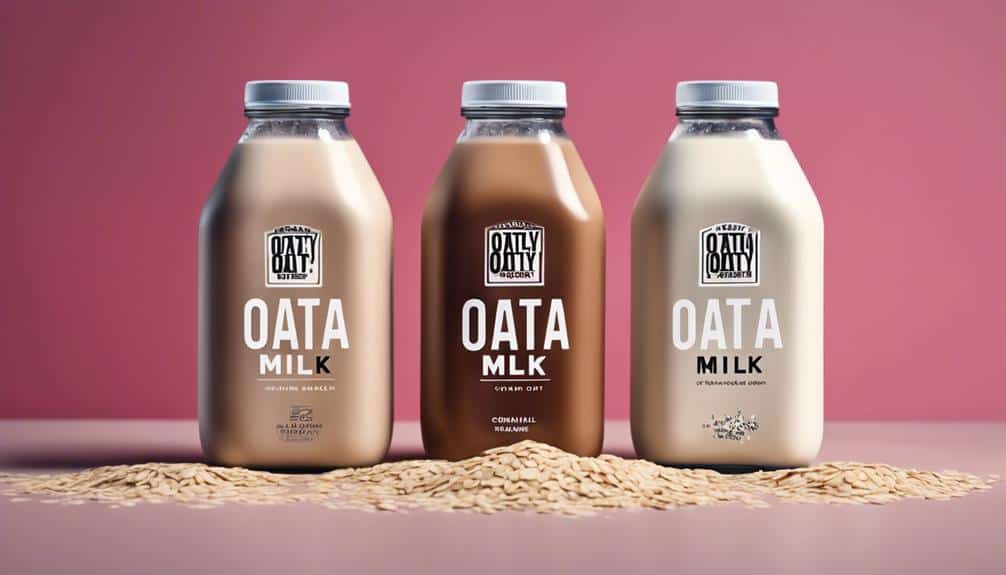
Considering the varying price points of Oatly Barista and Regular blends, the cost disparity between these oat milk options can have a significant impact on consumer decisions and usage preferences.
The cost comparison reveals that the Barista blend is typically priced higher than the Regular blend due to its specialized formulation catering to coffee and latte art enthusiasts. In contrast, the Regular Oatly oat milk presents itself as a more budget-friendly option, making it ideal for everyday use without breaking the bank.
It's important to note that the price impact of these blends may fluctuate depending on the retailer and location, influencing consumer choices based on budget considerations. Additionally, some cafes or specialty coffee shops may add an extra charge for incorporating the Barista blend into beverages, contributing to an overall higher cost for consumers.
These price variations play a significant role in shaping consumer preferences, with budget considerations and price impact being key factors in the decision-making process.
Environmental Impact
Emphasizing sustainability through the utilization of renewable energy sources and recyclable packaging, Oatly exhibits a commendable commitment to reducing its environmental impact. When comparing Oatly Barista to regular dairy milk, the environmental benefits of Oatly become evident:
- Lower Carbon Footprint: Oatly products have a markedly lower carbon footprint compared to traditional dairy milk production. This reduction in emissions contributes to combating climate change and promoting a more sustainable future.
- Avoidance of GMO Ingredients: By steering clear of GMO ingredients, Oatly adopts a more environmentally friendly approach. This decision not only benefits the ecosystem but also aligns with consumer preferences for natural and non-genetically modified products.
- Support for Biodiversity Conservation: Oatly goes beyond product manufacturing by promoting ethical farming practices and supporting biodiversity conservation. This commitment showcases a holistic approach towards environmental stewardship, fostering a healthier planet for current and future generations.
Availability and Packaging
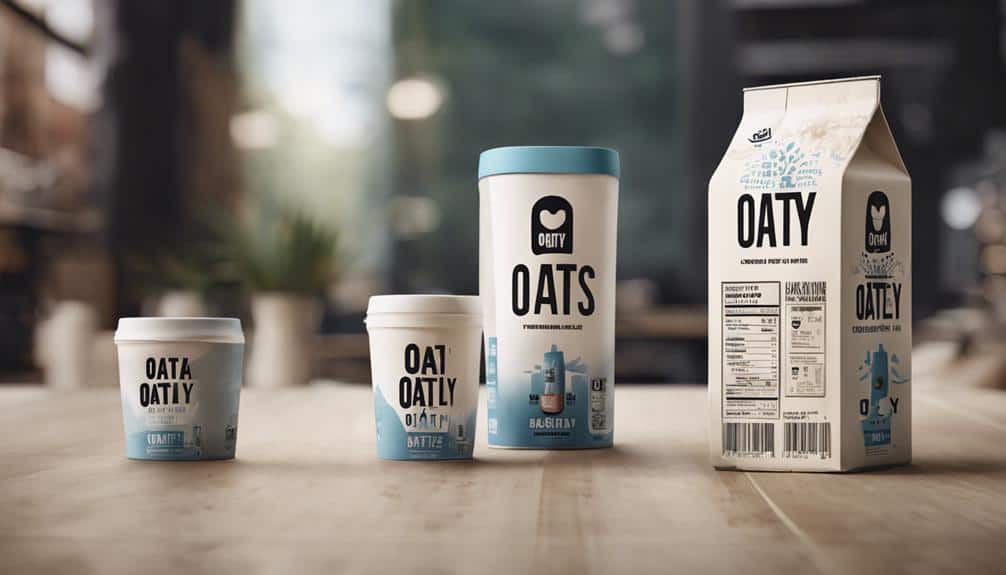
Highlighting the widespread availability and eco-friendly packaging of Oatly's Barista and Regular blends underscores the brand's commitment to accessibility and sustainability. Both blends are easily found in grocery stores and online retailers, making them convenient options for consumers seeking plant-based alternatives.
The iconic Oatly packaging, with its cute and practical design, not only stands out on shelves but also aligns with the brand's sustainability practices. The Barista blend, favored in cafes and bakeries for specialty coffee drinks, comes in packaging that caters to the needs of professionals. On the other hand, the Regular blend's packaging emphasizes the natural and organic ingredients it contains, appealing to health-conscious consumers.
Oatly's commitment to using environmentally friendly and recyclable packaging for both blends further solidifies its dedication to reducing its environmental impact. This approach not only enhances the brand's image but also resonates with consumers looking for sustainable options in the market.
Consumer Reviews
Consumer feedback on Oatly's Barista and Regular blends reveals diverse preferences based on individual taste preferences and desired uses.
- Flavor preferences: Consumers praise the creamy and thick texture of the Barista blend, likening it to cow's milk, while some enjoy the raw, oaty taste of the Regular blend.
- Barista popularity: The Barista blend is favored by many for its versatility in creating frothy and creamy beverages, making it a popular choice in cafes and bakeries.
- Regular blend appeal: Despite its less creamy texture, the Regular blend is appreciated for its distinct oat flavor, appealing to those seeking a more natural taste.
Conclusion
To sum up, the comparison between Oatly Barista and Regular oat milk reveals distinct differences in:
- Taste
- Texture
- Frothing capability
- Sweetness level
- Nutrition
- Price
- Environmental impact
- Availability
- Consumer reviews
The Barista blend stands out for its:
- Creamy texture
- Superior frothing ability
- Dessert-like sweetness
making it a popular choice for specialty coffee drinks. On the other hand, the Regular blend offers a more:
- Raw, organic flavor
- Watery consistency
Overall, the choice between the two blends depends on personal preferences and intended use.

